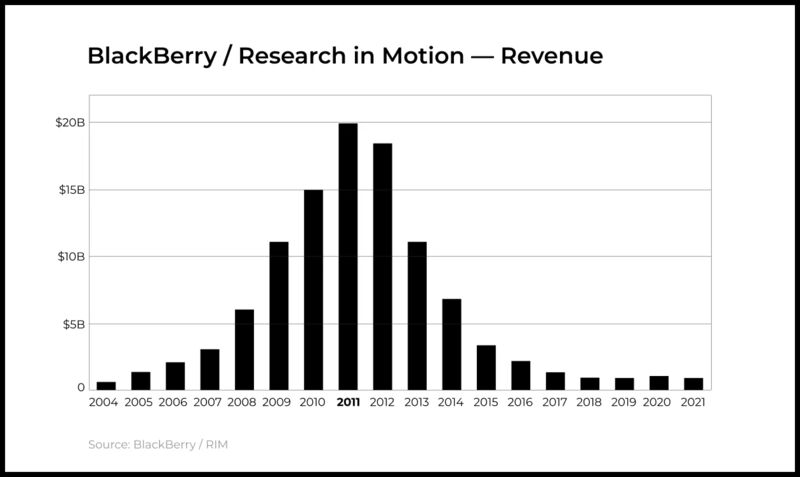People assume that product/market fit is a binary thing.
You have product/market fit or you don’t, right?
Actually, no.
→ Test your product management and data skills with this free Growth Skills Assessment Test.
→ Learn data-driven product management in Simulator by GoPractice.
→ Learn growth and realize the maximum potential of your product in Product Growth Simulator.
→ Learn to apply generative AI to create products and automate processes in Generative AI for Product Managers – Mini Simulator.
→ Learn AI/ML through practice by completing four projects around the most common AI problems in AI/ML Simulator for Product Managers.
Product/market fit can be weak… or strong… or in between.
It also changes over time.
Take the example of BlackBerry.
BlackBerry phones achieved initial product/market fit in the early 2000s. The ability to send and receive emails without a PC was incredible. BlackBerry was the only tool allowing people to do this, which created a lot of value.
BlackBerry’s product/market fit was strongest in the corporate segment. Who more than executives and managers needed to be able to communicate by email anytime, anywhere?
Over the years BlackBerry kept improving the product by introducing new features and strengthening existing ones. Product/market fit was getting stronger and market share was growing.
Everything changed in 2007. iPhone and Android phones burst onto the scene.
The new generation of smartphones was clearly more effective than BlackBerry at most tasks, including email.
With every update to iOS and Android, BlackBerry’s product/market fit got weaker and weaker — first on the consumer market, then on the corporate one. BlackBerry’s added value slid into freefall.
In a few years BlackBerry was so far behind that it had nothing to offer anymore. Product/market fit was gone.
BlackBerry serves as a cautionary tale of how product/market fit changes and can even disappear entirely.

How strong is product/market fit for your product? How has it changed over the last year?






